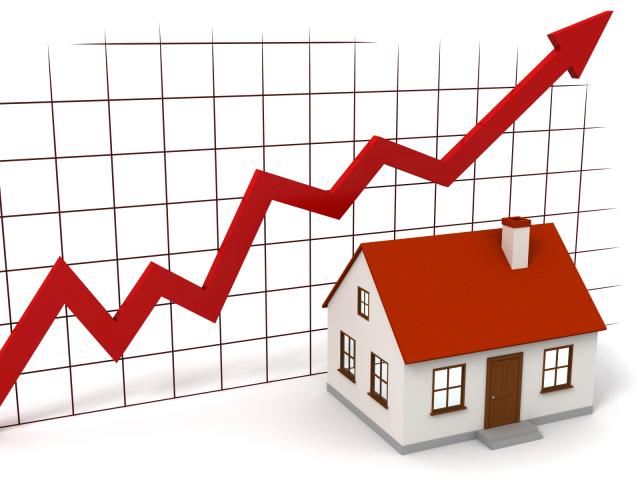The real estate market in the United States has always been a cornerstone of the national economy. From individual home ownership to large-scale commercial projects, the sector plays a crucial role in driving economic activity, creating jobs, and influencing consumer wealth.
One of the major influences on this dynamic market is fiscal policy—governmental measures that affect taxation and public spending. In this article, we will delve into how fiscal policies shape the U.S. real estate market, focusing on areas such as taxation, government spending, and housing incentives.
Taxation and its influence on real estate investments

One of the most direct ways fiscal policy impacts the real estate market is through taxation. The U.S. tax code has several provisions that affect property values, home ownership rates, and the overall attractiveness of real estate investments. For instance, property taxes, capital gains taxes, and mortgage interest deductions all play a significant role in determining the financial viability of real estate transactions.
Property taxes, imposed at the state and local levels, have a direct impact on home affordability and, consequently, housing demand. Higher property taxes can discourage buyers, particularly first-time homebuyers, from entering the market, leading to slower price growth.
Conversely, regions with lower property taxes may see a surge in demand as buyers seek more affordable options, thereby driving up property values in those areas. This imbalance can create regional disparities in housing markets. Capital gains taxes also affect investment in real estate, especially in the commercial and rental property sectors.
Investors weigh the potential returns on property against the tax liabilities they will incur when selling an asset. In times of higher capital gains taxes, some investors may hold onto properties longer to avoid hefty tax bills, reducing the number of transactions in the market. On the other hand, periods of reduced capital gains taxes may encourage more real estate sales, increasing market liquidity.
Government spending and its effect on housing supply and infrastructure
Government spending, another pillar of fiscal policy, plays a critical role in shaping the real estate market by affecting both housing supply and the infrastructure that supports it. Public investment in infrastructure projects like roads, schools, and transportation networks can increase the desirability of certain areas, boosting property values and encouraging new developments.
For example, when the government invests in building highways or improving public transportation, previously less desirable areas may experience increased demand due to their newfound accessibility. This can lead to higher property prices and an influx of developers seeking to capitalize on the improved infrastructure.
Moreover, government spending on affordable housing programs helps mitigate housing shortages by increasing the supply of low-cost homes. In cities facing affordable housing crises, such as New York and San Francisco, public spending is critical to balancing supply and demand dynamics. Additionally, fiscal policy often includes stimulus measures that allocate funds toward real estate development.
For instance, during economic downturns, the government may introduce spending initiatives designed to boost construction activity, such as infrastructure projects or public housing investments. These initiatives can help stabilize the real estate market by providing jobs in the construction industry and increasing housing stock to meet long-term demand.
However, the effectiveness of government spending on the real estate market depends heavily on the allocation of funds. If investments are disproportionately funneled into certain regions or sectors, imbalances can emerge, creating overheating markets in some areas while others languish due to underfunding.
Housing incentives and their role in market dynamics
Housing incentives, often implemented through fiscal policies, are designed to promote homeownership and drive real estate investment. These incentives can range from tax credits for first-time homebuyers to subsidies for developers building affordable housing. Such measures aim to boost demand or supply in specific segments of the housing market, helping to balance overall market dynamics.
The mortgage interest deduction, for instance, has long been a staple of U.S. fiscal policy. By allowing homeowners to deduct mortgage interest payments from their taxable income, this policy reduces the cost of homeownership, thereby encouraging more people to buy homes.
While the mortgage interest deduction has been a key driver of homeownership, especially among the middle class, its benefits tend to favor higher-income households who can afford larger mortgages, potentially skewing demand in certain segments of the market.
First-time homebuyer programs also serve as a significant incentive for new buyers to enter the market. These programs often provide tax breaks, lower down payment requirements, or reduced interest rates on government-backed loans.
By lowering the financial barriers to entry, these initiatives can stimulate housing demand, particularly in times when affordability is a concern. However, if not carefully managed, these incentives can create an unsustainable surge in demand, leading to rapid price increases and exacerbating housing affordability issues.
Long-term implications of fiscal policy on real estate stability
The real estate market is highly sensitive to changes in fiscal policy, with long-term effects often taking years to materialize. Policies that encourage homeownership, boost infrastructure, or incentivize development can lead to sustained growth in the real estate sector, but they can also contribute to market volatility if not managed carefully.
One of the key challenges policymakers face is striking the right balance between stimulating economic activity and preventing the formation of housing bubbles. For example, during periods of aggressive fiscal expansion, such as the aftermath of the 2008 financial crisis, low interest rates and stimulus spending spurred a resurgence in housing demand.
While these policies were crucial in stabilizing the economy, they also laid the groundwork for housing market imbalances in the following years. In certain regions, housing prices surged, creating affordability crises and increasing the risk of market corrections.
Conclusion: a delicate balance of policy and market forces
The U.S. real estate market is a complex ecosystem influenced by various factors, with fiscal policy being one of the most significant. Taxation, government spending, and housing incentives all play critical roles in shaping market trends, determining property values, and influencing the behavior of investors and homeowners alike.
As we look to the future, the continued evolution of fiscal policy will undoubtedly have a lasting impact on the U.S. real estate market. Striking the right balance between stimulating growth and maintaining stability will be key to ensuring that the market remains robust, accessible, and resilient in the face of economic challenges.

